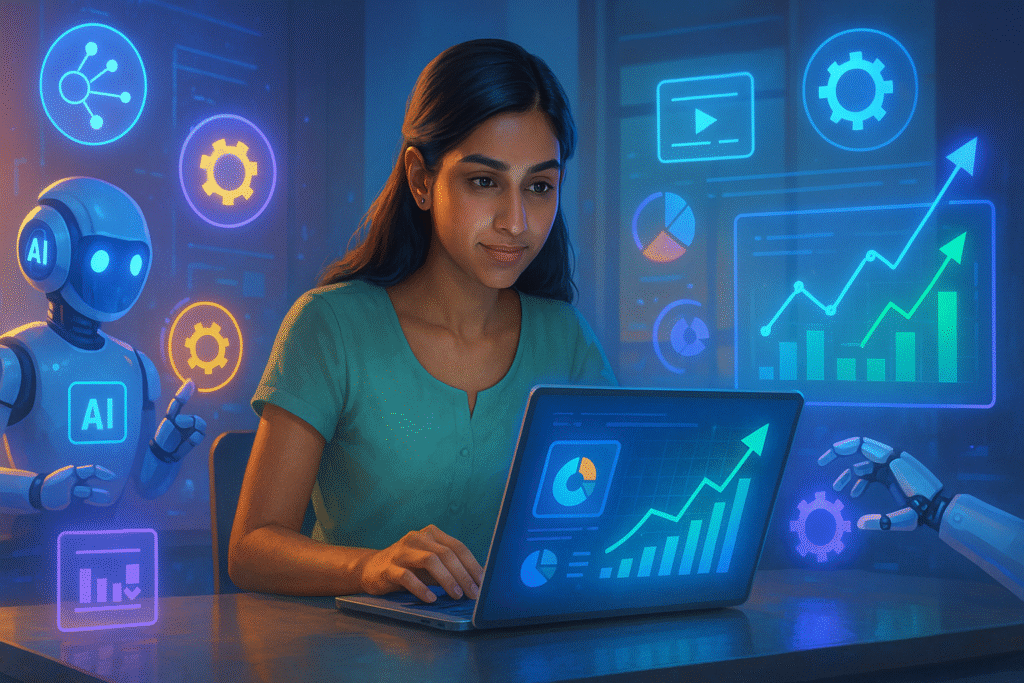Think about this. You’re scrolling Instagram. A fitness influencer is showing a protein shake. A fashion creator is flaunting sneakers. A gamer is promoting headphones. And without realizing, you’re making mental notes: “This brand looks cool.”
That’s influencer marketing, the art of selling without it looking like selling.
In 2025, influencer marketing is not just a trend. It’s the new advertising industry. And if you’re a digital marketing student, you need to know how it’s evolving because tomorrow, you’ll either be managing influencers or maybe even becoming one.
So let’s break down the future of influencer marketing in simple, student-friendly language.
First, Quick Recap: What is Influencer Marketing?
Influencer marketing = when a brand partners with someone (influencer) who has a following on social media to promote their product.
Earlier, a big celebrity did this think Virat Kohli for MRF. But now? Even a student with 10,000 loyal followers on Instagram can influence buying decisions.
In short: Brands don’t just need stars; they need trust.
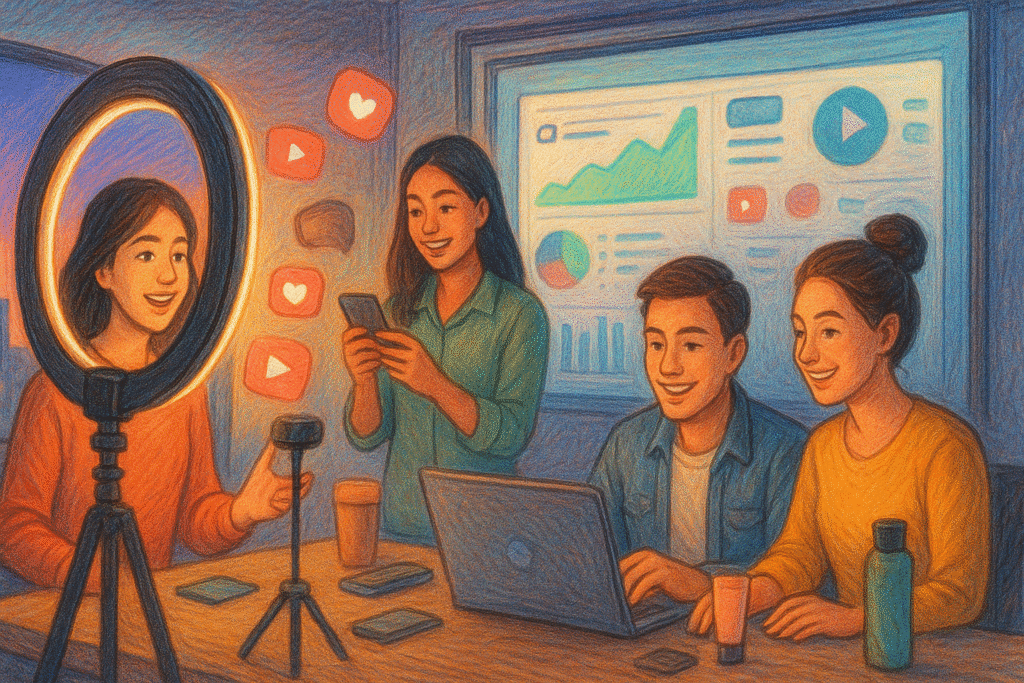
Why Influencer Marketing Works
Trust Factor: People believe influencers more than brand ads.
Relatability: A college student talking about exam stress feels more real than a TV commercial.
Community: Influencers build tight-knit groups. One recommendation = instant buzz.
The Future of Influencer Marketing (Important Trends)
1. Rise of Micro & Nano Influencers
Forget celebs with millions of followers. Brands now prefer:
Micro-influencers (10k–100k followers)
Nano-influencers (1k–10k followers)
Why? Their audience is small but loyal. Engagement rates are higher.
Example: A food vlogger with 5k local followers can sell more pizzas in Delhi than a Bollywood actor with 10M fans.
2. Video > Everything Else
Influencer marketing is shifting from static posts to short videos, Reels and Shorts
Why? Because attention spans are tiny. 30 seconds is all you get.
Students should learn video editing, storytelling, and creating thumb-stopping content.
3. AI-Generated Influencers (Yes, They Exist)
Crazy but true: some influencers are not even real humans. AI-generated characters like Lil Miquela already have millions of followers.
Brands love them, no scandals, no controversies, always “on brand.”
Lesson: As students, keep an eye on virtual influencers. Tomorrow, you might manage campaigns for them.
4. Authenticity > Perfection
Earlier: Glossy photos, perfect lighting.
Now: Raw, real, unfiltered content works better.
Example: A student influencer casually sharing their messy desk + Red Bull before exams feels more relatable than a polished ad.
Tip for students: If you ever become an influencer, don’t fake it. Authenticity is your biggest currency.
5. Long-Term Partnerships
Earlier: One-off posts “Hey, buy this shampoo!”
Now: Brands prefer ongoing collabs influencers become brand ambassadors.
Why? Consistency builds trust. If an influencer promotes 10 different shampoos in 10 weeks, nobody takes them seriously.
6. Multi-Platform Influence
Gone are the days when influencers lived only on Instagram.
Now:
Instagram for Reels
YouTube for long-form
LinkedIn for professional influence
Podcasts for niche audiences
As a student, don’t stick to one platform. Learn to diversify.
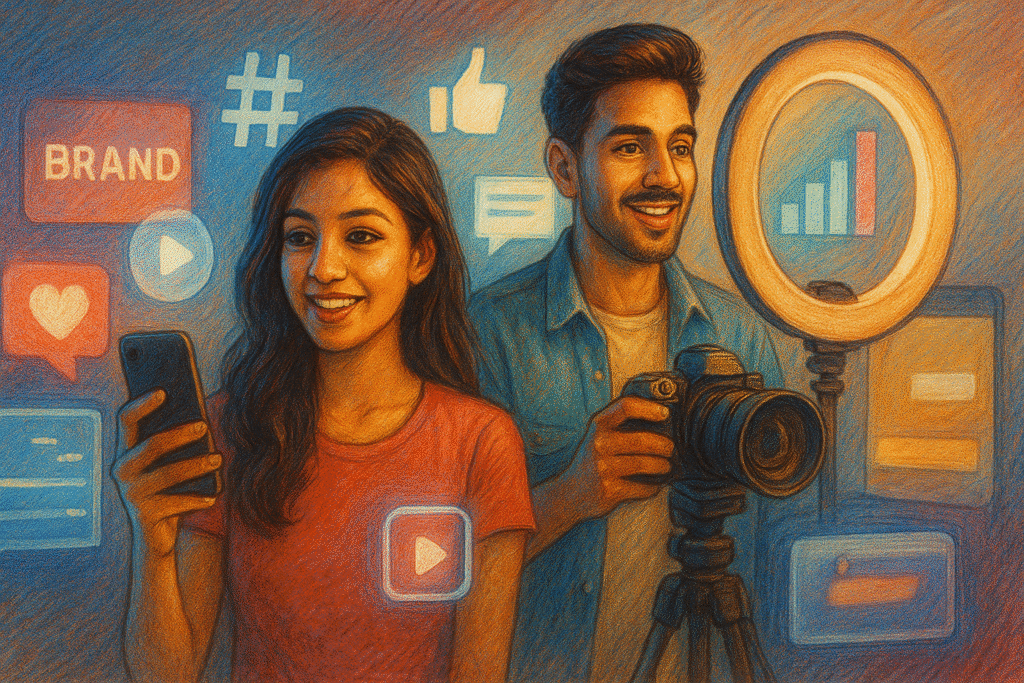
7. Social Commerce Integration
In the future, you won’t just watch influencers—you’ll shop directly from their posts.
Instagram Shops
YouTube “Buy” buttons
TikTok Shop Brands will expect influencers to drive sales, not just likes.
8. Regulation & Transparency
Influencer marketing is getting more serious. In India, the Advertising Standards Council of India (ASCI) already requires influencers to label paid content.
Future: Students managing campaigns will need to follow legal guidelines. No hidden ads. No misleading posts.
9. Performance-Based Deals
Earlier: Influencers got paid flat fees.
Now: Many deals are performance-based (commission per sale, affiliate links).
This means influencers must deliver results, not just pretty pictures.
10. Student Influencers on the Rise
Here’s the exciting part: Students themselves are becoming influencers.
Study tips influencers on YouTube
Fitness creators on Instagram
Gaming streamers on Twitch
College fashion creators on Reels
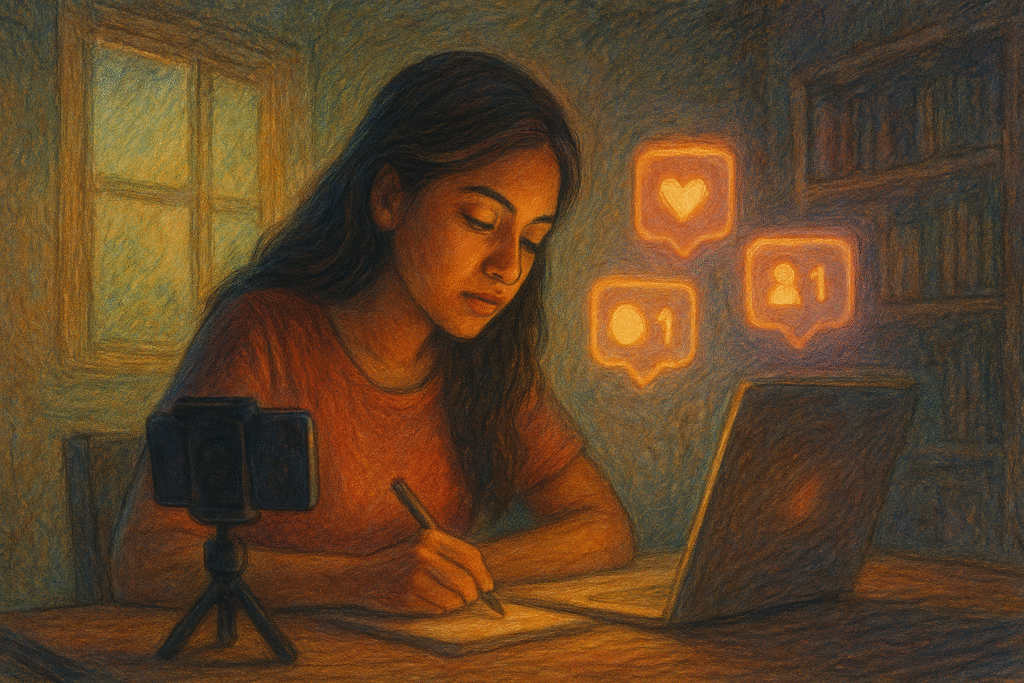
What This Means for Students
If you’re studying digital marketing, influencer marketing isn’t just something to “watch.” It’s something to practice and master.
Here’s how:
Follow top influencers in your niche.
Study how they engage their audience.
Experiment with your own content.
Learn how to collaborate with influencers for brands.
Mini Case Study: Ananya’s Side Hustle
Ananya, a BBA student, started posting skincare routines on Instagram. Slowly, she built 8,000 followers.
A local organic brand noticed her, sent free samples, and later paid her ₹10,000 for a campaign.
She didn’t stop. By her final year, Ananya was making ₹40,000/month as a student influencer without a “real” job yet.
Lesson: Influencer marketing is not just for stars. Students can benefit too.
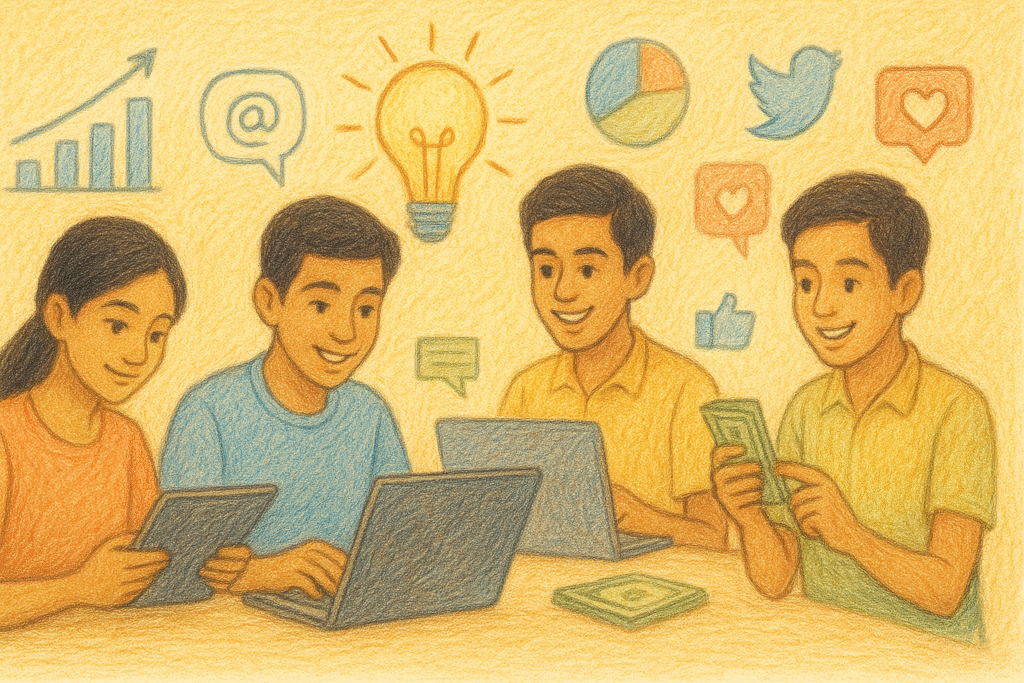
Skills Students Should Build for the Future of Influencer Marketing
Content creation (video + storytelling)
Analytics (measure ROI, not just likes)
Negotiation (working with brands/influencers)
Community building (engagement > followers)
Legal awareness (disclosure rules, contracts)
Quick Recap
The future of influencer marketing is about:
Micro & nano influencers
Short-form video dominance
Authentic, relatable content
AI + virtual influencers
Long-term partnerships
Multi-platform presence
Social commerce integration
Transparency & regulation
Performance-based deals
Students becoming influencers
Final Thoughts
Influencer marketing is no longer a side hustle; it’s a multi-billion-dollar industry.
For digital marketing students, this is golden. You can:
-
Work with influencers.
-
Work as an influencer.
-
Or even create strategies for both.
Remember: The future belongs to those who can influence.
And the earlier you start learning, the faster you’ll be ahead of the game.
So next time you’re double-tapping a Reel or buying something because an influencer recommended it, don’t just act like a consumer. Think like a marketer.
Because tomorrow, it could be YOU running the campaign or starring in it.

